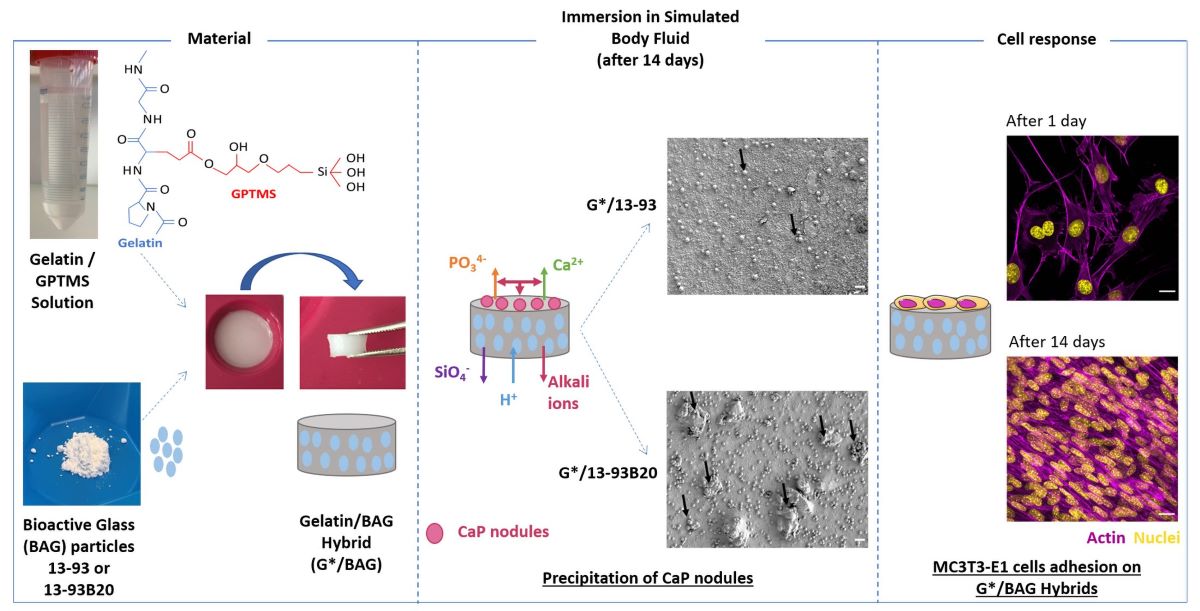Hybrid scaffolds based on bioactive glass (BAG) particles (<38µm), covalently linked to the gelatin (G*), using 3-glycidoxypropyltrimethoxysilane (GPTMS), have been studied for bone bioengineering. In this study, two glass compositions (13-93 and 13-93B20 [where 20% of the SiO2 was replaced with B2O3]) were introduced in the gelatin matrix. The Cfactor (Gelatin/GPTMS molar ratio) was kept constant at 500. The hybrids obtained were found to be stable at 37°C, in solution; condition at which pure gelatin is liquid. All hybrids were characterized by in vitro dissolution in TRIS solution (for up to 4 weeks) and Simulated Body Fluid (SBF) (for up to 2 weeks). Samples processed with 13-93B20 exhibit a faster initial dissolution and significantly faster precipitation of a hydroxyapatite (HA) layer. The faster ion release and HA precipitation recorded from the G*/13-93B20 samples, is attributable to the higher reactivity of borosilicate compared to the silicate glass. MC3T3-E1 cells behavior, in direct contact with the hybrids, was investigated, showing that the cells were able to proliferate and spread on the developed biomaterials. Tailoring the glass composition allows to better control the material’s dissolution, biodegradability, and bioactivity. Bioactive (especially with 13-93B20 BAG), and biocompatible, the hybrids are promising for bone application.

